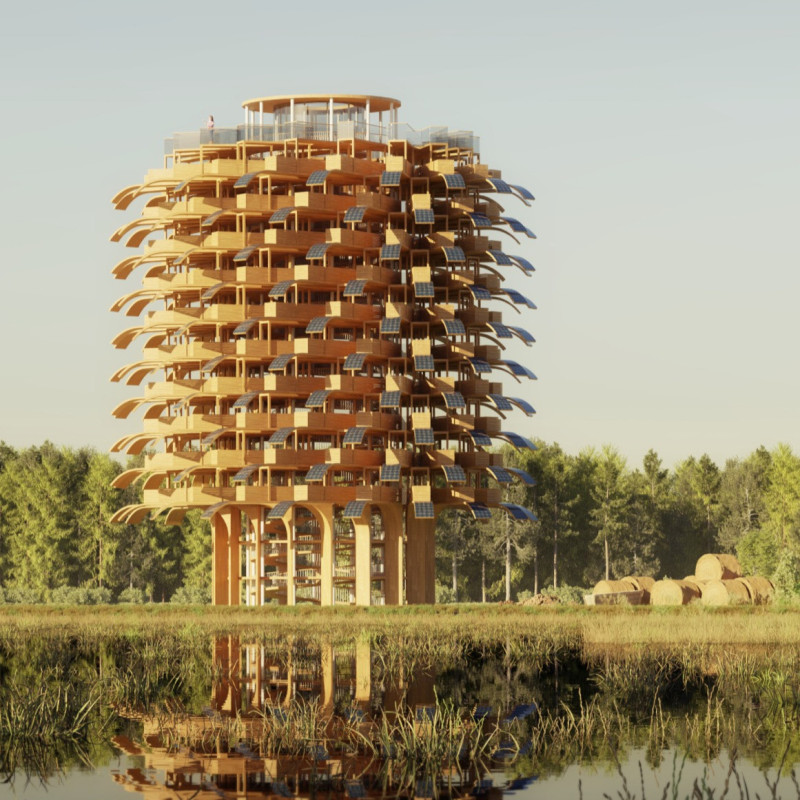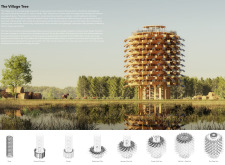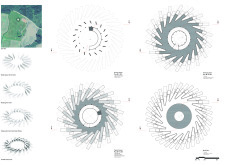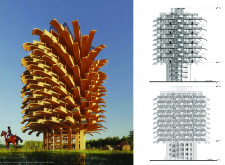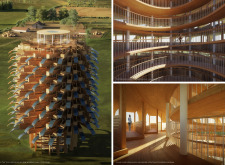5 key facts about this project
The primary function of The Village Tree is to facilitate observation and interaction with the surrounding landscape. The circular design incorporates multiple observation cells that rotate and stack, allowing for a unique experience at each level. A circular corridor connects these cells, ensuring fluid access while enhancing visual connectivity. The structure culminates in a sky deck that offers panoramic views of the biosphere, merging the user experience with the beauty of the natural environment.
Sustainability plays a crucial role in the architecture of The Village Tree. The building utilizes prefabricated modular units, which allow for efficient assembly and minimize waste. A combination of steel and wood composite contributes to structural stability while maintaining aesthetic warmth. Significant attention has been given to energy efficiency, with solar panels incorporated into the design to support the tower's energy needs, promoting a net-zero approach.
The unique design of The Village Tree sets it apart from typical observatories. Its tree-like form not only resonates with traditional natural aesthetics but also invites visitors to engage with the environment in a meaningful way. This architectural project promotes community participation, serving as a space for educational events and gatherings. The design encourages social interaction while serving its primary function as an observation point.
In examining the architectural plans, sections, and designs of The Village Tree, one can appreciate the thoughtful integration of form and function. The project stands as a model for sustainable architecture, demonstrating how modern design can coexist with and enhance the natural landscape. For those interested in learning more, exploring the project presentation will provide deeper insights into the architectural ideas and innovative elements that distinguish this observatory tower from others.


